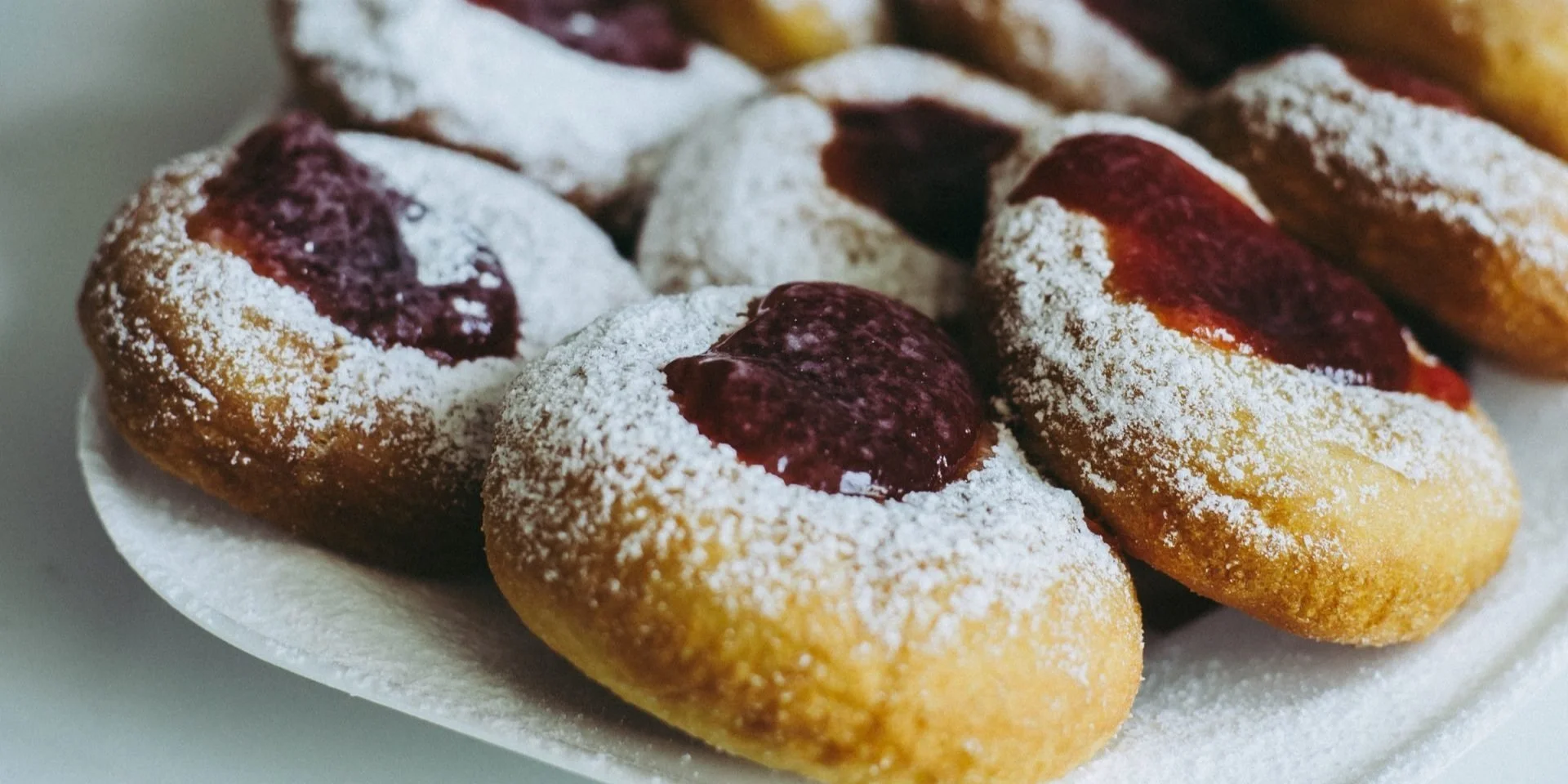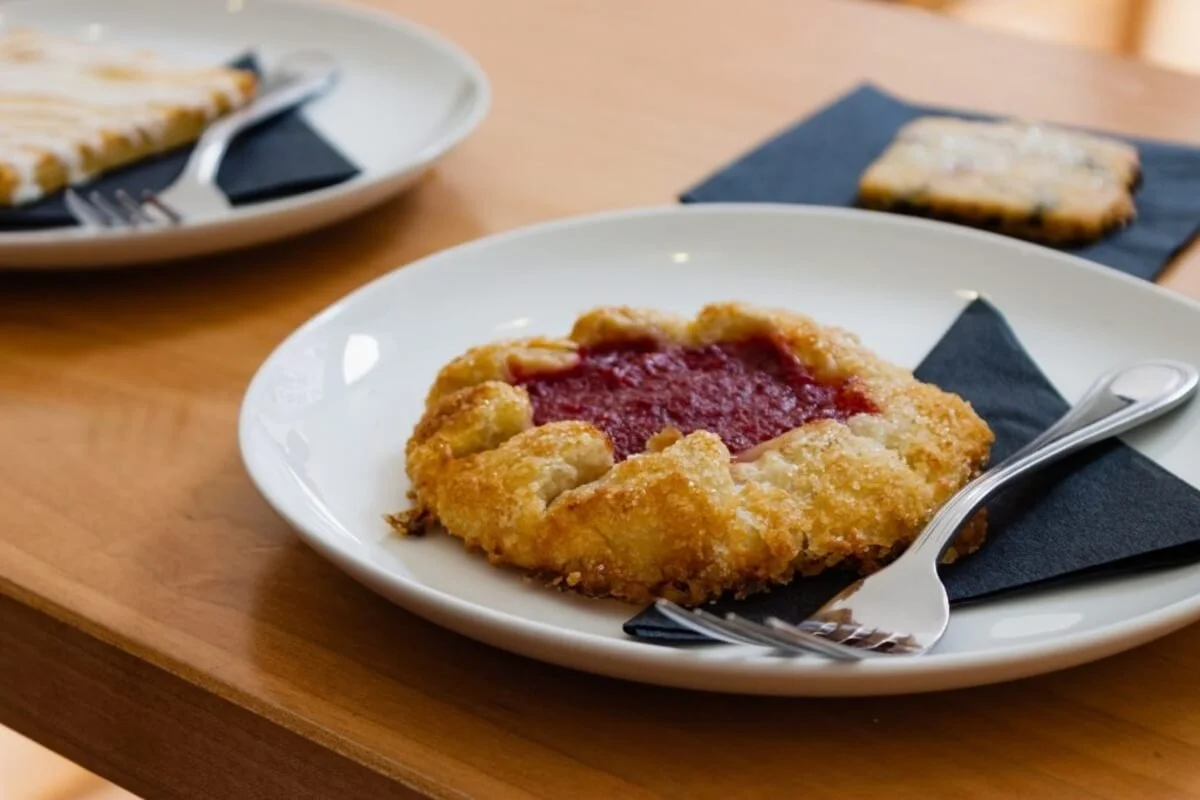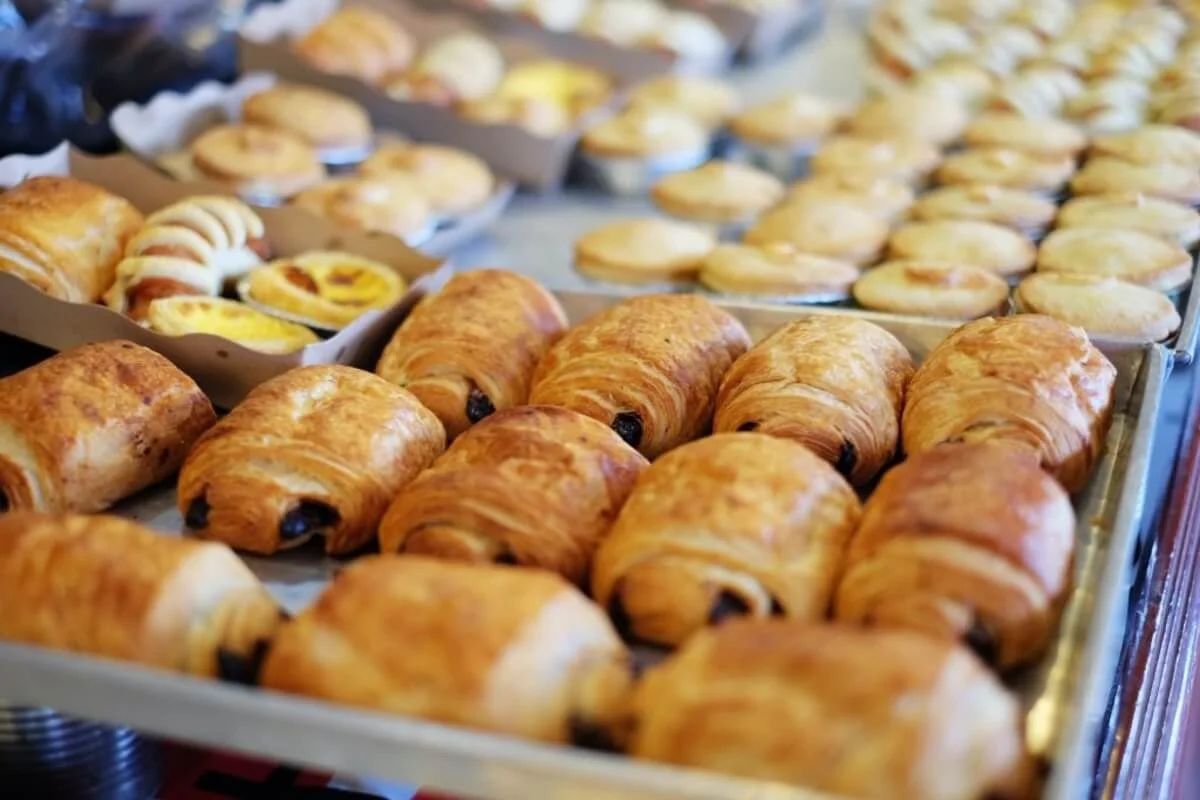Sweet Delicacies with Kolache Origin
Discover > Truly Texan > Sweet Delicacies with Kolache Origin
This Texan staple needs no introduction. Crumbly, soft pastry made from yeast dough and hiding a dollop of juicy fruit. The only thing is that the Kolache is not really Texan, so let’s check out the Kolache origin. Where do Kolaches come from?
The Birth Of The Kolache Origin
Where do Kolaches originate from? Many generations ago, the Czech Republic was the Kolache origins. Where a mother and daughter stumbled upon a recipe during their baking sessions together. So, what is a Kolache in Texas? It is a ball of dough, something like a roll, filled with cheese or fruit. ‘Kola’ in Czech means ‘wheel’ or ‘round’. And so, the cookie-sized slightly sweet kolache was born.
Made at home mostly, with each family having their special recipe, the recipes evolved through the years depending on the availability of local produce and pantry staples. They were made with a sweet dough yeast dough that was hollow in the center and filled with fruit. Families baked kolaches mostly every week if not more often!
Popularity In The Czech Republic
Where were kolaches invented, and where are kolaches originally from? If you think the markets of Prague are filled with cozy little bakeries that sell 101 varieties of traditional, authentic kolaches, you will be very disappointed. There are very few places that sell them in Prague.
So, where were kolaches invented? The kolache origin goes all the way back to Moravia, a region that is located further to the south. The natives of Moravia are the ones who migrated to the USA in the 1800’s and the early 1900’s.
Popularity In The USA
Why are kolaches popular in Texas? The tasty bites arrived in Texas when tens of thousands of Czech immigrants came through the port of Galveston, bringing with them their rich Czech culture. The new arrivals settled mainly along the coastal plain on the rich black land areas of central Texas, and quickly set up their communities, churches, and businesses, including bakeries that would become known as the Kolache Capital of Texas. These delicious pastries, known by their Czech word, became a beloved part of Texas Czech cuisine, and are still enjoyed by locals and visitors alike as a delicious reminder of the Czech heritage that is so deeply ingrained in Texas culture.
By the mid of the mid-20th century, Czech festivals like the Westfest and Caldwell's Kolache festival had become familiar to all of us here in Texas.
Eventually, the Kolache craze died down in the Czech Republic and took Texas by storm. Church bazaars sold hundreds in a day. This made the 1st generation Texans sit up and take notice. They had to preserve the traditional Czech ways that would otherwise fade into oblivion.
The First Kolache Bakery In Texas
The Village Bakery was the first place on record to sell kolaches to the public in Texas. It opened in 1952 and the rest became pastry history. The traditional recipe called for kolache ingredients, including fruits and herbs local to the Czech Republic like apples, apricots, poppy seeds (how long do poppy seeds last?), prunes, peaches, and cherries.
The Czechs enjoyed the kolache origins and used everything available on the farms. Whether it be the fruit or the cheese, most of it is sourced locally. Cottage cheese (how long does cottage cheese last?) is everything for the Czechs.
Catering to the American palate, the bakery owners introduced new flavors including strawberry, blueberry and pineapple.
The Savory Kolache, The Klobasniki
Those of us who love our kolaches know that the name only goes for the sweet ones. The savory pastry is called a Klobasniki. Unlike the kolache that came to us from the Czech Republic, the Klobasniki was born in the Village Bakery when the kielbasa sausage came together with grandmother Honey's (how long does honey last?) kolache dough recipe. This happened when Wendel Montgomery got the idea from eating a hot dog. It was their version of a pig in a blanket.
The plain or the jalapeno sausage and the sausage and cheese versions were all winners, but experiments like the sausage and sauerkraut (how long does sauerkraut last?) never made it out of their kitchen.
Montgomery eventually trademarked his invention under the name of Klobasniki, that essentially means little sausage in Czech.
So, the next time someone asks if you want a fruit or sausage kolache, give them a little history lesson. Explain that the original kolache is actually made using a sweet dough and filled with fruit. If they are talking about a savory one, then they actually want a Klobasniki.
The Kolache Festival
Hallettsville, Texas celebrates its very own Kolache festival on the last Saturday of September, with tons of kolaches, music and more. Crowds head to the festival to learn where did kolaches originate. Honestly, I cannot think of a better way to celebrate a delicious pastry, rife with culture and history that has flavored our Texan cuisine forever.
Where Can We Find The Best Kolaches In Texas
Today, we regard kolaches to be as Texan as barbecue. You will find both the true and tried Czech kolaches side by side with the Klobaniskis-usually under the same name. Their grab-and-go quality has earned them the top spot as a road trip fare, and so are spotted in many Czech and German bakeries that dot the highways linking Dallas, San Antonio, Austin and Houston.
Pearl Snap kolaches in Fort Worth run by Wade and Greg serves the city’s finest kolaches. They even have a secret bread recipe that is worth tasting!
Batch Craft Beer and Kolaches in Austin offer a range of flavors in kolaches, from the sausage and cheese and the ham and cheese to the chocolate, caramel and pecan and the seasonal fruit kolache. They even have a peanut butter (how long does peanut butter last?) and jelly one!
Whether you find them in an artisan bakery or a convenience stores on the Interstate, Kolaches are immediately lovable.
Want to learn about other historical events in Texas? Check out our previous post on the curious history of moonshine here.
Looking for best BBQ in Dallas-Fort Worth?





